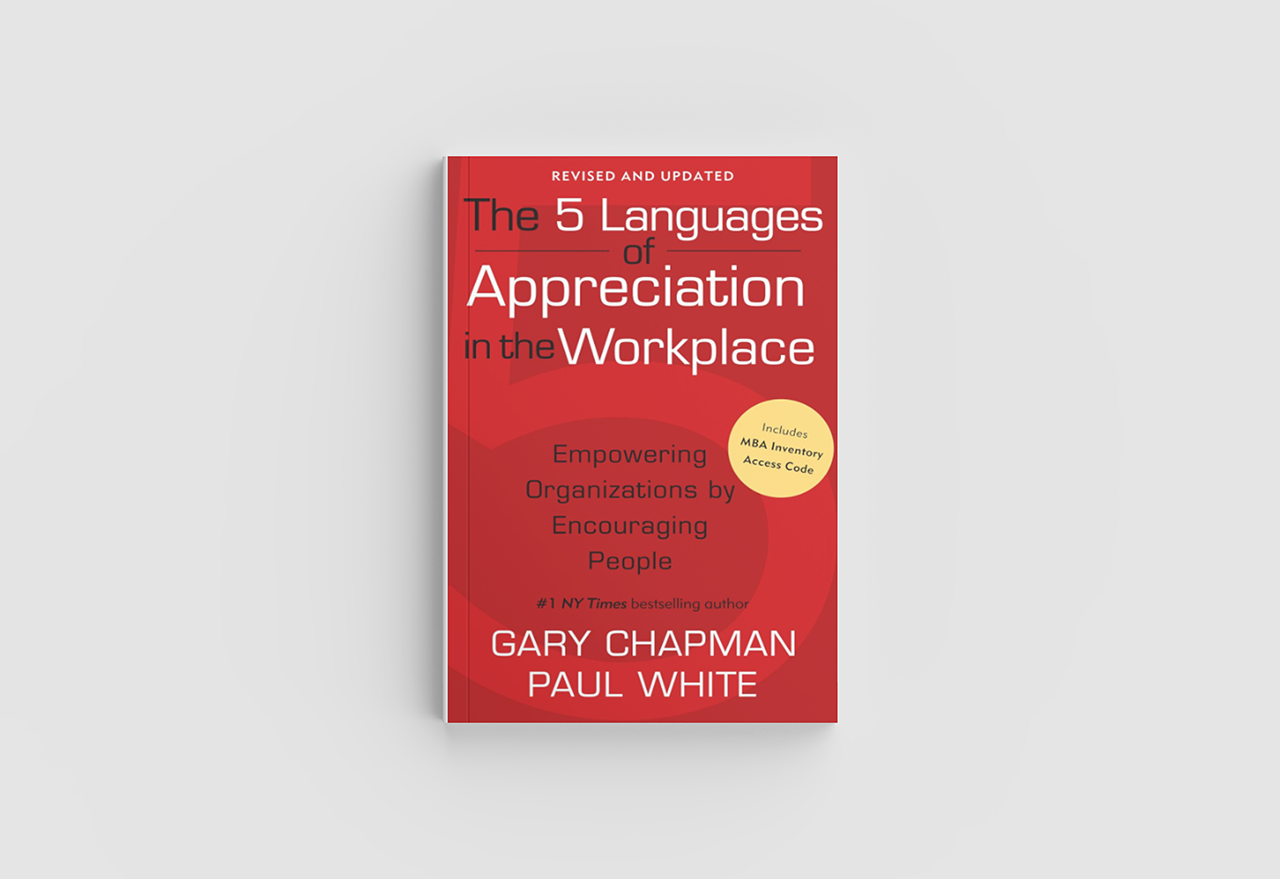BETTER IMPACT BOOK BITES
This Month’s Selection: How To Win Friends & Influence People By Dale Carnegie The sixth in a series of Better Impact Book BitesA taste of great...
11 min read
 Corina Sadler, CVA
Sep 6, 2022 10:00:00 AM
Corina Sadler, CVA
Sep 6, 2022 10:00:00 AM

This Month’s Selection: The (Help!) I-Don't-Have-Enough-Time Guide to Volunteer Management
By Katherine H. Campbell, CVA & Susan J. Ellis
The fifth in a series of Better Impact Book Bites
A taste of great books worth consuming.
Every other month I’ll choose a volunteerism-specific book to share with you. I’ll relate the text to my current experience in our field as volunteer engagement professionals (VEPs). I’ll no doubt end up reading every volunteer engagement book and this one landed in my lap, so I figured it was a sign. The words of Susan J. Ellis have kept me clinging to the field of volunteer engagement during stressful times, and pairing them with Katherine H. Campbell sounded like a solid bet. Another reason I chose this book was its slim size of 113 pages. I’ve heard from other pros it’s hard for them to find time to read. I think this one is a match for busy VEPs. The edition I read came out in 2004 and was a revised version of a 1981 book, “No Excuses: The Team Approach to Volunteer Management.” If you’re not familiar with Susan J. Ellis, I recommend you follow up this review with my “From The Top Down” review. I like to go back and read books from different periods of our profession. It can be telling when comparing to where we are as a field today.
DOVIA Sacramento mailed me two volunteer engagement books after I presented during their “BookTalking” session. Aside from treasuring them, I wanted to bring one to #BookBites and share my gift with you! I read this sentence on the first page of the preface, “The price of success in building a thriving and expanding volunteer project is too often limitless agency expectations without additional staff help” and I knew I must continue. We need more books in volunteer engagement. I hear rumblings a few volunteer engagement experts are preparing to release books, and I’m excited that new perspectives and solutions are on the horizon. I read social media discussions, and I know the newest professionals have felt a little lost out there. As a field we should be adding more words that can be found by the next group of VEPs. Are you working on a book? Maybe an Engage article?
If you train others on leading volunteers, this is a quick read that won’t disappoint. It has step-by-step guides and easy to understand verbiage that you can use to explain the layered work we do leading volunteers. If you are applying for volunteer engagement jobs and have no formal training, this is a quick glimpse into how to get things up and running once you’re hired. It’s also good for a professional who does not identify as a VEP but engages volunteers in their organization. Susan and Katherine understood the huge variety of organization types that have volunteers serving alongside staff. The point of the book is emphasizing the “team approach” to involving volunteers. They describe the tipping point when the workload and expectations exceed the given level of staff support.

This is not a recent publication but someone studying for their CVA credential exam might like another text to visit and appreciate the fast tips provided. It’s also a good refresher for someone moving into an organization that might not have all their volunteer ducks in a row. The steps outlined make you realize that you’re not confused. There is a tried-and-true method to involving volunteers, and you’ll need some help along the way.
“Unfortunately, too many people are given (and accept) the responsibility for directing volunteers without a full understanding of what the job entails.” The written job description can leave much out of the day-to-day expectations of the role. In the interview process, ask questions. If you’re not sure what to ask, reach out to other VEPs in your area. I see people who experience a culture shock when they start their position online, describing how they’re starting their first role as a volunteer coordinator THAT day and what tips do we have for them. Oh boy. It's exciting and I’m glad these brand new VEPs find the online communities fairly early. It will take time before they show up at DOVIA meetings. This page reminds us that one bullet point may be given to recruiting, interviewing, and training, but we know the truth. There should be a dozen sub-bullet points for each. What questions would you have asked during your interview if you could have it again?
“You should feel comfortable in your role as resident expert in volunteerism and in recommending the type of structure and support necessary for a successful program.” There is nothing wrong with wanting to be a leader within your organization and flexing your volunteer engagement expertise. If you’ve been in the field for a while, then you have exactly the right experience at your organization and potentially in your community. Leaders need time to plan, strategize, evaluate, and ask the tough questions. We take time to pause and ask: Why do we want volunteers here? What is our vision for the volunteer program? What are our expectations of volunteers and staff? Go and be the expert your volunteers need. If you don’t yet feel like the expert, ask for training, seek a mentor, read books, and listen to the voices from the field until you define your own style.
“If co-workers come to understand the multi-step process in recruiting volunteers, they’ll be less likely to expect results overnight.” This chapter suggests explaining exactly what is involved in meeting certain time-consuming requests in an effort for staff to understand the backend work of volunteers arriving on-site. Over the years I’ve perfected explaining what my process is and why I need X number of days to locate and screen a potential volunteer. I explain how our sign-ups work, what the vetting is like, and how I customize as much as I can to the volunteer experience. I feel it does work, and people remember and begin to respect the process. We have to show and tell what we do in order to dispel assumptions that being a volunteer coordinator is easy to do.
“Since you do not have the time to do everything yourself, you must delegate specific parts of your job to others.” A well-run volunteer program does not mean a haggard volunteer coordinator. Our roles include so many responsibilities, and we will reach a breaking point if we don’t set up systems to support the day-to-day function of volunteer administration. Systems can mean staff support, tech tools, and much more. Susan was a big proponent of having volunteers in the volunteer engagement office. VEPs can lead by example by having volunteers supporting the backend work of the program. If there is no space, then using this team-approach to having staff or other stakeholders helping you can be done tactfully and with great results. When VEPs go so long without asking for assistance, it can be a hard function to relearn, but it’s worth it. We have to let go to let people in and show them how amazing the work of volunteer engagement can be. The more the merrier. Tip: page 36 has a “Delegation Potential Sheet” that is worth a look. Susan and Katherine point out, “the major premise of bringing volunteers into an organization is to delegate tasks.”
This page has a list of five items for managing individual volunteer performance assessments. Some organizations are required to perform assessments for accreditation to a governing body. Others may award perks for great performance. If you’re new to your organization, find out the history of evaluations and assessments for volunteers. Do you have a great one you’d be willing to share?
“Keep records on [your] own activities as Director of Volunteers.” I love this action item being included. We record outcomes and track data on the actions of volunteers but are we also keeping track of our own duties, accomplishments, outcomes, and wins? That information would be valuable during an annual review, applying for an award, or a host of other settings where we should bring to light the actual work we do every day. If you’re not asked to submit a monthly report to anyone, create one for yourself that lists what you’ve accomplished that month. Look through your calendar, notes, and key emails to jog your memory.
“The reality is that the person who first answers your organization's main telephone line can turn a potential volunteer on or off about getting involved.” This one I’ve heard a few times, but it’s still a good point. Doing an internet search to see what phone numbers are associated with the volunteer program can help identify the staff member who will end up being the first point of phone contact. They should be well prepared to route a potential volunteer to the right VEP. What can we provide them to make a hand-off easier?: a quick guide, a business card, a reference sheet? What do you provide?
“If you try to ignore certain aspects of the job, the consequences will haunt you.” Shortcuts and band aids will only last so long. If you accept a VEP role and feel you’re in too deep, my advice is to speak up. Talk to your supervisor, colleagues, and lead volunteers to figure out where you can get support. It’s achievable to push through the overwhelming start of a new job, so don’t quit. This book gives you the ability to see Volunteer Engagement as a team effort within an organization. If you believe in the value of volunteerism, then they hired the right person.
“Volunteers need to feel that you are directly tied into the organization’s administration or else they will suspect (correctly!) they have no effective voice.” VEPs sit in many different places within the hierarchy of organizations. Wherever we fall, our volunteers and staff engaging volunteers need to know we have access to top administration. Does all our counting of hours and survey requests actually go anywhere? Is it presented to stakeholders outside of our sphere of influence? If your position has no upward flow of communication, it’s time to make it a team effort. Inserting ourselves into a chain of command requires leadership support and the ability to be available to volunteers and paid staff to receive their input, feedback, and concerns.
“Everyone - from administration to maintenance, salaried or not - must demonstrate respect for, faith in, and enthusiasm about volunteers. You cannot maintain an upbeat atmosphere and motivation all by yourself.” Read that again. It’s impossible as a department of one to lead the charge each and every day. In the certificate program I teach, I get questions about changing organizational culture when they are NOT pro-volunteer. It’s tough. Get training and support. Read up and see what you can show them to inspire an appreciation for the work of volunteers. In the end, it’s not your job to change organizational culture, but you must be aware of the issue and prepared to receive feedback from your stakeholders. Identify those in your organization who do have an interest in volunteerism and start building connections with them to see if it can grow from there.
“Meet individually with any staff resistant to volunteers, in an attempt to discuss the situation and resolve it.” Easier said than done. How have you tackled the responsibility to engage staff who avoid volunteers? We need on-going training over having difficult conversations. As we walk the line between advocates for volunteers and holding a role as a paid staffer, we must create our own style to addressing staff who refuse to engage volunteers. That will look different for each organization, but the event will inevitably happen where we must step in. It’s an on-going balance VEPs maintain the relationships between staff and volunteers. Our staff face different challenges and perhaps volunteer supervision isn’t right for them, but that should be explored and not easily shirked.

Oftentimes when I read a book, I pause and my age or my place in time offers context. It was only by page 18 this moment happened. I was stuck on a bulleted list and flipped quickly to the front of the book to see what year Susan and Katherine were in when this list was written. 2004. Gulp. I was still a freshman in college in 2004. As a millennial I’m a little saddened the items on this bulleted list are still being touted as innovative ideas to implement in volunteer programs today. At what point will these items be foundational to volunteer programs and no longer something we discover year after year? Do you have these implemented in your program? Let me know what’d you’d add to this list in 2022.
“You can work to develop positive attitudes and meet these needs by requesting the following from your executive:
“Remember that if you are enthusiastic about your role, others can be too.” It’s okay to love your job. It’s okay to be passionate about the work of volunteer engagement. If you're surrounded by colleagues who don’t “get it,” then it’s time to build up your in-office volunteer crew and network of fellow VEPs. Keep pushing to express why the work is important and should be regarded as an integral strategy to mission work. It’s time to test the buy-in from leadership about your role. I train about determining what we want out of our career experience. We must put the work in, but we also must raise our visibility and find our voice in the workplace.
“The better you become at developing systems and procedures that simplify, do several things at once, and save time, the easier you will find your job of managing volunteers.” If we have to take a sick day, does the volunteer program fall apart? As VEPs have we taken the time to establish the inner workings of the program can run without our oversight for a bit? This chapter talks about time management skills and how the systems we set up can create better teams working together. If we manage our time well, we should be able to configure approaches to getting all the tasks of the volunteer program done that help us and don’t hinder us. I know each VEP will have their own list of what works and what doesn’t. The tried-and-true techniques in the book don’t cover all the needs of today’s professionals, but they’re a good jumping off point.
These pages give a lot of examples of banding together with other volunteer programs to work on projects. From resources, training to recognition events Susan and Katherine might make you pause to consider how partnering with another organization could work. They again reference DOVIAs as a great hub to find like-minded VEPs to work with.
“Your only recourse is to get organized and involve others.” If the team approach doesn’t sound like a match for your setting, I think you can still pick out bits and pieces from this book to help your workflow. “When your team participates in tackling difficulties, setting priorities, getting work done, location resources, documenting results, and visibly moving the organization towards its mission and goals, you will be demonstrating the qualities of a true leader.” It’s hard to ask for help, but we have to build up our teams to maximize the impact of volunteer programs.
Pages 22-35 outline the Volunteer Management Task Analysis. Some tasks we do better than others, but it’s all the pieces of the puzzle that make up our role. When I teach my certificate program, I feel like I’m laying it on pretty thick, but this list hasn’t changed much. Maybe add in TikTok recruiting or posting ads to LinkedIn for corporate engagement as something new, but the majority of this feels like common sense volunteer engaging. This list outlines our need to make decisions, provide an ethical lens, and be given responsibility and ability to apply our knowledge and experience. What did you find surprising listed back in 2004?
Thanks to everyone who has shared these bites, left a comment, or given me a thumbs up in person about this series. Promoting reading as professional development is for a unique audience, but I will continue to encourage leaders of volunteers to seek other perspectives and include learning on their career journey. How have you consumed content this year? Podcasts, social media groups, journals, networking groups – share in the comments!
I’m taking recommendations for other books to feature in this series that are not specific to volunteer engagement but have some connection to the work.
Is your Volunteer Organization seeking a better way to save time, money and mitigate risk?
Learn how Better Impact's Top-Rated Volunteer Management Software Solution can help your Volunteer Organization with:
Start your Free Volunteer Management Software Trial Today!
Featured Posts

This Month’s Selection: How To Win Friends & Influence People By Dale Carnegie The sixth in a series of Better Impact Book BitesA taste of great...

This Month’s Selection: Creating The Volun-Cheer Force: Rethinking the Way We Use Volunteers in Long-Term Care By Paul P. Falkowski, PH.D. The...

This Month's SelectionThe 5 Languages of Appreciation in the Workplace: Empowering Organizations by Encouraging People, by Gary Chapman and Paul...